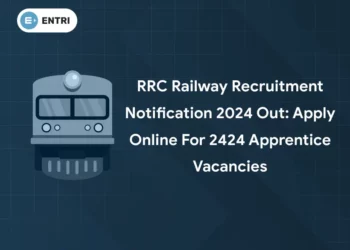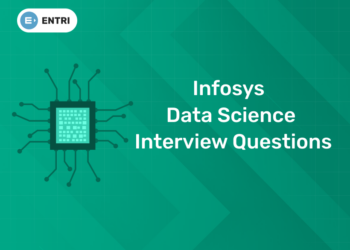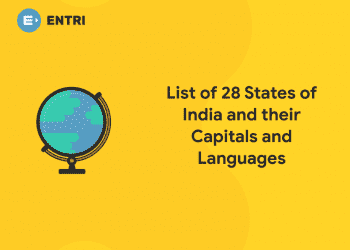Table of Contents
Are you looking for the latest syllabus and exam pattern for KSEB Assistant Engineer Electrical 2023? You have come to the right place! Here, we provide you with all the information you need to know about the KSEB Assistant Engineer Electrical 2023 syllabus and exam pattern. We will give you an overview of the topics covered in the syllabus, the exam pattern, and the important dates to keep in mind. With this information, you will be well-equipped to prepare for the upcoming exam and get one step closer to achieving your goal of becoming an Assistant Engineer Electrical. See KSEB Assistant Engineer Electrical Syllabus and Exam Pattern 2023.
Join our Telegram channel to get Free study materials and quizzes
Kerala PSC KSEB Assistant Engineer Electrical 2023: Overview
| Kerala PSC Assistant Engineer Electrical 2023: Overview | |
| Department | KSEB |
| Name of post | Assistant Engineer Electrical |
| Category Number | 439/2022 |
| Number of vacancy | 01 |
| Age limit | Must have completed 20 (Twenty) years as on 01.01.2022 |
| Mode of appointment | Direct recruitment |
Kerala PSC KSEB Assistant Engineer Electrical Recruitment 2023: Apply Online
Kerala Public Service Commission announced KSEB Assistant Engineer Electrical vacancies across Kerala. The recruitment drive aims to fill Assistant Engineer Electrical posts. The application form for recruitment is available on PSC Thulasi Portal. If interested, visit the Kerala PSC Website or your PSC Thulasi profile on or before April 11, 2023. Make sure you done one time registration to apply for the post. Save your user Id and password to apply for the same as well as other recruitments condcuted under Kerala PSC Department. Follow this article for latest updates
Click here to know more about government exams
KSEB Assistant Engineer Electrical Eligibility Criteria 2023
Educational Qualification
- Candidates must possess a degree in B.Tech. in Electrical/Electrical & Electronics Engineering from an institution recognised by AICTE.
Age Limit
- Minimum Age: 19 Years
- Maximum of 40 Years
Experience
Experienced as well as freshers can apply for the post
Number of Attempt
There is no limit to the number of attempts for the KSEB written exam
KSEB Assistant Engineer Electrical Vacancy 2023
Check below for KSEB Assistant Engineer Electrical Vacancy 2023. Click on the below link to download KSEB Assistant Engineer Electrical Vacancy 2023 PDF
-
Download Here
KSEB Assistant Engineer Electrical Selection Process 2023
KSEB Assistant Engineer Electrical Selection will finalize through the following stages.
- Prelims
- Mains
- Interview
- Document Verification

Kerala PSC Assistant Engineer Electrical Exam Pattern 2023
| Modules | Paper/ Subject | Marks |
| Module 1 | Electric Circuits | 10 Marks |
| Module 2 | Magnetic Circuits. | 10 Marks |
| Module 3 | Electrical Machines | 10 Marks |
| Module 4 | Digital Electronics | 10 Marks |
| Module 5 | Power Systems | 10 Marks |
| Module 6 | Control Systems | 10 Marks |
| Module 7 | Power Electronics and Operational Amplifiers | 10 Marks |
| Module 8 | Measurements and Instrumentation | 10 Marks |
| Module 8 | Signals and Systems | 10 Marks |
| Module 8 | Transducers, Batteries, Electrical wiring | 10 Marks |
Kerala PSC KSEB Assistant Engineer Electrical 2023 Syllabus
The syllabus for the KSEB Assistant Electrical Engineer exam has been given below:
KSEB AE Electrical Syllabus 2023
| Units | Topics |
| Module 1
Electric Circuits |
Kirchoff’s laws – maximum power transfer theorem. Star/delta transformation. Energy stored in a capacitor and inductor. Analysis of coupled circuits – dot polarity convention – sinusoidal steady state analysis of coupled circuits. Generation of alternating voltages and currents – rms value, average value, peak factor, form factor. AC through series R, L, C circuit – series resonance- resonant power – bandwidth. Resonance in parallel circuits. |
| Module 2
Magnetic Circuits |
Absolute and relative permeability of a medium – Magnetic field strength- magnetic potential. Relation between magnetism and electricity – Series and parallel magnetic circuits with composite materials. Faraday’s laws of electromagnetic induction- Lenz’s law – statically and dynamically induced EMF |
| Module 3
Electrical Machines |
DC Generators– Constructional details, working principle – types of dc generators – emf equation – power stages – condition for maximum efficiency. DC motor – armature control and field control. Single phase transformer – working principle, equivalent circuit, losses in a transformer, condition for maximum efficiency. Three phase transformer – construction- difference between power transformer and distribution transformer. Alternators– constructional details –Synchronous motor – starting methods – synchronous condenser. Three phase induction motor – working principle, constructional details – slip, torque and current equations – torque- speed curve. Special Electrical Machines: Types and applications |
| Module 4
Digital Electronics |
Number Systems and Codes: Binary, Octal and hexadecimal conversions- ASCII code, Excess -3 code, Gray code. Combinational circuits – Adders – Full adder and half adder. Multiplexers- De multiplexers. Flipflops – registers – counters. Digital – to – Analogue and Analogue-to-Digital conversion. Microprocessors – Internal architecture of 8085 microprocessor–Functional block diagram Instruction set – Addressing modes – Classification of instructions – Status flags. Machine cycles and T states – Fetch and execute cycles- Timing diagram |
| Module 5
Power Systems
|
Line parameters -resistance- inductance and capacitance. Insulators –string efficiency – corona. Circuit breakers: rating, types. CTs – PTs – Relays – types. Per unit quantities- symmetrical components – symmetrical and unsymmetrical fault. Power system stability – steady state, dynamic and transient stability-power angle curve – Load Flow analysis – Gauss Siedal, Newton Raphson, Fast decoupled load flow |
| Module 6
Control Systems |
Transfer function of LTI systems – block diagram reduction – Signal flow graph – Mason’s gain formula – Type and Order of the systems- Characteristic equation Time domain specifications of transient and steady state responses- Impulse and Step responses of first order and second order systems. Static error coefficients of type 0,1,2 systems. Routh’s stability criterion. Frequency domain specifications. Polar plot and Bode plot – concepts of gain margin and phase margin- stability analysis. |
| Module 7
Power Electronics and Operational Amplifiers |
SCR- Structure, Static characteristics. Fully controlled and half controlled bridge rectifier with R, RL and RLE loads. Voltage Source Inverters– 1-phase half-bridge & full bridge inverter with R and RL loads – Three phase inverter – Pulse width modulation. Single quadrant, Two quadrant and Four quadrant chopper. Operational Amplifiers – fundamental differential amplifier- Modes of operation. Properties of ideal and practical Op-amp – gain, CMRR and slew rate. |
| Module 8
Measurements and Instrumentation |
Measurement standards – errors – Types of Errors. Classification of instruments, secondary instruments–indicating, integrating and recording. Ammeters and voltmeters – moving coil, moving iron. Measurement of power: Dynamometer type wattmeter –Construction and working – Three phase power measurement – single wattmeter and two wattmeter methods. Measurement of energy – Single phase energy meter – construction and working. Digital Energy meters -Time of Day(TOD) meters. Oscilloscopes- principle of operation of general purpose CRO-basics of vertical and horizontal deflection system. |
| Module 9
Signals and Systems |
Classification of signals – Elementary signals- Basic operations on continuous time and discrete time signals. Concept of systems – Classification of systems- Properties of systems – Time invariance- Linearity -Causality – Memory – Stability. Sampling process – Impulse train sampling – sampling theorem- Aliasing effect. Zero order and First order hold circuits. |
| Module 10
Transducers, Batteries, Electrical Wiring |
General classification- LVDT- angular displacement transducers- hall effect transducers. Batteries – Primary cells– secondary cells- battery ratings- grouping of cells. Wiring – systems of wiring- rules for domestic wiring. Earthing- types of earthing – rules for earthing. Illumination – Laws of illumination. Electric lamps – different types |
Kerala PSC KSEB Assistant Engineer Electrical Syllabus 2023 PDF
How to Download Kerala PSC KSEB Assistant Engineer Electrical Syllabus 2023
- Visit the official website of Kerala Public Service Commission at https://www.keralapsc.gov.in/.
- Select the Recruitment tab on the home page.
- Scroll down to the Download syllabus section.
- Go to the Assistant Engineer Electrical Syllabus link and click
- The Assistant Engineer Electrical PDF of the Syllabus will appear.
- Then you can download the KPSC Assistant Engineer Electrical Syllabus.
- Finally, view The Kerala PSC Assistant Engineer Electrical syllabus and verify the details.
KSEB Assistant Engineer Previous Year Question Paper PDF
Kerala PSC KSEB Assistant Engineer Mock Test 2023
| Exam | |
| Mock Test Paper – 1 | |
| Mock Test Paper – 2 | |
| Mock Test Paper – 3 | |
| Mock Test Paper – 4 | |
| Mock Test Paper – 5 | |
| Mock Test Paper – 6 |
| KSEB Assistant Engineer Electrical Exam Information Links | |
| KSEB Assistant Engineer Notification | KSEB Assistant Engineer Mock Test |
| KSEB Assistant Engineer Syllabus | KSEB Assistant Engineer Video Course |
| KSEB Assistant Engineer Exam Date | KSEB Assistant Engineer Study Materials |
| KSEB Assistant Engineer Vacancy | KSEB Assistant Engineer Interview Questions |
| KSEB Assistant Engineer Admit Card | KSEB Assistant Engineer Job Profile |
| KSEB Assistant Engineer Study Plan | KSEB Assistant Engineer Salary |
| KSEB Assistant Engineer Previous Question Papers | KSEB Assistant Engineer Preparation Tips and Tricks |
| KSEB Assistant Engineer Best Books | KSEB Assistant Engineer Result |
| KSEB Assistant Engineer Eligibility Criteria | KSEB Assistant Engineer Cutoff |
| KSEB Assistant Engineer Selection Process | KSEB Assistant Engineer Exam Analysis |
| KSEB Assistant Engineer Answer Key | |














